Get Better Quality With Agile Testing Practices
Содержание
Without it, you’ll find yourself retesting the same functionality repeatedly and falling behind quickly. As QA, you have an understanding of good testing practices. Perhaps look for ways to make the design more testable. The QA helps to proactively address issues and potential bugs within an application during the development cycles.
But don’t spend too much time filling out forms, tickets, or any other unnecessary work. Look for streamlined ways you can execute tests and then clearly communicate the defect to the development team without much overhead. Test-Driven development is a process of developing and running automated test before actual development of the application. Hence, TDD sometimes also called as “Test First Development”. They contain details on how a feature behaves in different situations with different input parameters. These are known as “executable specifications” as it is built on both specifications and inputs to the automated tests.
Customer Collaboration Over Contract Negotiation
It can also help address functionality, performance, or security issues. This not only ensures stability of the application, but also bring down the testing efforts once the application lands in the hands of the users. Gile software development is a practice to establish an approach that involves flexibility, speed, and collaborative effort.
Much like code review, we’ve seen testing knowledge transfer across the development team because of this. When developers become better testers, better code is delivered the first time. Another outcome of continuous feedback combined with early and frequent testing is testers developing an intricate knowledge of the product. Depending on the methodology of testing used, they can combine that knowledge with customer input to help developers create a superior product. Now, you may think that you’ll need to learn to code to automate all these tests. Learning to code—or at least learning some light scripting—definitely has its benefits.
Wheres The Qa Agile Manifesto?
Sure, getting a feature out the door took longer. But bugs and rework dropped significantly, saving us huge amounts of time in the end. We believe each user story in the backlog requires both feature code and automated test code. Although some teams assign the developers the feature code while the test team takes on automated testing, we find it’s more effective to have a single engineer deliver the complete set. Improperly implemented, Agile testing can weaken team structure and product development, preventing a viable product from ever being released. Even when properly used, all Agile methodologies have their weaknesses.
With shorter and faster development cycles the chances of compromising with quality increases, and that’s where Quality Assurance comes in. It promotes continuous iteration of development and testing throughout the software development lifecycle of the project. In the Agile model both development and testing activities are concurrent, unlike the Waterfall model.
The additional structure ensures that all areas of the product are thoroughly tested, and avoids backlogs building in any particular area. With Agile, the test plan is in place throughout. Everytime a new update is made to the code, the test team gets their QA Framework for Agile Methodology hands on it, feeding back directly to the developers. These test cycles can also feature automated tests and a small selection of end users. In order to understand agile testing, it’s important to understand what the Agile development methodology involves.
Now, this value doesn’t mean you can’t have any documentation. It means you should create documentation only if it provides value. If you need documentation for something, then write it. In this post, we’re going to take a look at what going agile means from a QA perspective and how you can change to thrive in this environment. The simple concept of TDD is to write and fix the failed tests before writing new code. Test cases are nothing but requirement conditions that we need to test to fulfill them.
Did you know that 89% of development models used are Agile or similar? This ultimate guide will explain what the Agile testing method is, how you can implement, and when you should use it.
Qa Agile Methodologies
And, as waterfall usually went, those few weeks would shrink from four to three to two weeks max as software development deadlines slipped. We still needed to ship our product, and the QA team would feel much of this pain. Fear not, we still need QA in our new agile world. And with this guiding principle, you’ll be on your way to creating a robust and healthy QA process.
- Agile testers are adaptable and flexible, keeping up feedback from user stories, as well as changes in the product and the marketplace.
- And with agile, we want to find ways to break that problem down and work towards the final goal iteratively.
- As a result, features or the entire product can be completely irrelevant by the time it reaches customers.
- With shorter and faster development cycles the chances of compromising with quality increases, and that’s where Quality Assurance comes in.
- A step-by-step guide on how to drive a scrum project, prioritize and organize your backlog into sprints, run the scrum ceremonies and more, all in Jira.
Quality of the application is an integral component of the equation, especially, to bring validation and ensure stability for the application and hence it can’t be compromised. It helps to build an application that is robust, reliable, and accessible even during any unforeseen circumstances. It makes bugs and error fixing easier and in the middle of project development. Finally, since everyone in the team performs testing, the muddied hierarchy could lead to confusion and conflict.
Meetings are held to collect input from these three roles, and use them to define acceptance tests. The customer focuses on the problem, the developer pays attention to how the problem will be solved, and the tester looks at what could go wrong. Continuous feedback — testers provide continuous feedback to team members regarding the https://globalcloudteam.com/ quality. Agile way of development is experimental and exploratory in nature. The testing team needs to sync in effectively within the development cycle to deliver the application with test cases. Agile testing begins at the initial phase of a development project and involves the ongoing integration between testing and development.
Advantages Of Agile Testing
Agile testers are collaborative, preferring human interaction to technology. Their focus on people enables them to deliver a product that prioritises usability and utility. Agile testers act on the aphorism that simplicity is the ultimate sophistication. For testing, that means performing only those tests that are necessary, and all tests that are necessary. For the product, that means delivering the simplest possible product that delivers the most possible value.

Are we overlooking something from their perspective? The more everyone on the team focuses on the customer, the more perspectives you’ll have. And that will help you uncover assumptions that might leave a gaping quality hole in your end product.
It starts with designing and developing tests for every small functionality of an application. TDD framework instructs developers to write new code only if an automated test gets failed. With Agile development, both testers and developers have to work together. Hence, it becomes important that the requirements are frozen and the team is well informed. Testing comes into play right from the time when the user stories get finalized. Both the development and testing team needs to have a clear understanding of the expected scope of work.
At the end of an iteration the features are ready and the product is delivered for customer’s usage. It’s important to have QA engineers on the team as well. QA brings an important perspective to the development of a feature, and good QA engineers know where bugs usually hide and can advise developers on probable “gotchas.”
Agile Testing And Role Of Qa In Agile
Your developers should write unit and integration tests. However, they don’t always cover all the scenarios or haven’t build up those skills yet. Additionally, they test knowing the internals of the system, using white-box testing methods. Also, when we’re on the team from start to finish, we have the chance to affect the delivery of the product much more. In an agile team, roles aren’t as clearly defined. You may be able to write your own story by stepping in as a testing coach or automation SME.
Introduction To Agile Methodology In Testing
And this can be your time to shine by sharing your expertise with the team. Work with your team to build quality into the development process. As I mentioned earlier, the goal no longer involves just finding bugs and defects, but preventing them during the development cycle. The biggest change involves having QA as a part of the agile development team, and not a separate team. Since we’re part of the team, we’re able to assist in continuous testing, instead of doing it all at the end of a sprint. In our old waterfall world, the QA team would get a few weeks prior to release to learn and test all the new functionality.
As the name implies, an Agile methodology is focused on responding to change. There are many frameworks teams might use, such as Scrum or Kanban, but at the center of it is a collaborative approach. As a first step, start using Testim today for free, and see where the automation can take you.
Test-driven — testers evaluate the product at the time of implementation, rather than after implementation. Less documentation — Agile development focuses on current customer needs rather than comprehensive, documented requirements and instructions allowing for reusable checklist. Covering the all testing (manual + automation) in the same iteration.
For example, exploratory testing can lack the structure necessary to ensure a product is comprehensively tested; ATDD accounts for customer feedback, but not for business outcomes. Agile testing has become a critical part of application lifecycles and has had a significant impact on software development, testing and quality assurance. It has also gained widespread acceptance as a crucial driver for the delivery of high-quality products.
They actively seek out problems and bring people together to solve them. To keep things from breaking in the customers’ hands, testers attempt to break it first – and then have it fixed. Understanding your product’s design can help identify interesting edge cases that should be considered. From a day-to-day standpoint, involve yourself in stand-ups, retros, and demos. Stay on top of the work the team is doing so you’re aware of dependencies between stories and what additional testing will be necessary.
Traditionally, testing was a separate activity that came after the coding phase, but in agile, testing is continuous and allows them to indulge in the development phase. In agile every iteration has its own testing phase. It allows implementing regression testing every time new functionalities or logics are released. Treat bugs in new features and regressions in existing features differently. If a bug surfaces during development, take the time to understand the mistake, fix it, and move on. If a regression appears (i.e., something worked before but doesn’t anymore), then it’s likely to reappear.
The most important thing in agile is that both testing and development teams work together in parallel. With dedication, each of these pitfalls can be overcome and the three powerful benefits experienced. The first step towards successful Agile testing is determining when Agile testing should not be used. Blind adoption of Agile testing can result in a weak, crash-prone product. Agile enables testers to detect more defects earlier in the development process.
As a result, features or the entire product can be completely irrelevant by the time it reaches customers. With these and other testing methodologies, it can be difficult to assess which type of test should be run, how often it should be run, when it should be run, and who it should be run by. There are so many types of tests – acceptance testing, regression testing, unit testing, and more.




